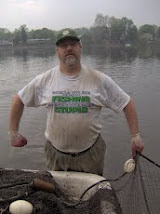Think of the stereotypes
of Spain, apart from conquistadors and cruel religious inquisitors and tilting
at windmills ala Don Quixote. There are plenty of tapas, and siestas and
Spanish guitars and fluttering fans. There are matadors in their colorful
regalia testing their bravery in the bullfighting rings and, there is Flamenco
dancing.
Think of Spain and
invariably there are visions of the swirl of a Flamenco dancer, accompanied by
a guitarist and men polyrhythmically handclapping and finger-snapping while
singing “Cante Jondo” or deep song of this Andalusian art form. Lots of foot
stomping too, with a kind of “hellraising” gusto, a show of machismo and
strength. Yes, Flamenco can be considered the cultural identity of Spain, but
it wasn’t always appreciated by the Spaniards.
IT'S COMPLICATED
Flamenco dancing today
may be the most iconic image of Spain, but its roots began in the south in
Andalusia an area often derided by the rest of the country and the much-ostracized
ethnic minority of Gypsies. Flamenco was considered by the church to be
immoral, leading to the breakdown of family values. Intellectuals thought
Flamenco and bullfighting kept Spain in a backwards mentality, unable to move
forward into the modern world, and the working-class reformers and revolutionaries
thought Flamenco took advantage of the poverty of masses.
SHOW ME THE PESETAS
A funny thing happened
on the way to pursuing these high-minded ideals, albeit worthy, tourism! After
years of international isolation, the dictatorship of Francisco Franco realized
tourism would bring in the money they sorely needed. Embracing the stereotypes of
Spain, and especially the Flamenco, the government began to promote Flamenco
dancing, allowing clubs that featured Flamenco to operate, and pictures of
exotic Flamenco dancers covered the travel advertising brochures. The strategy
worked and millions of tourists flocked to Spain. Today Flamenco isn’t
simply a ploy to lure foreigners to Spain but a good way to make money. In Seville
there are a lot of Flamenco bars and show venues, called tablaos, that feature
the ubiquitous dance form. Sometimes the bars are free, and some consider this more
authentic than attending a show, but usually the talent is better at the show
venue.
¡BAILAS BIEN! (You dance
well)
We saw Flamenco twice
during our stay in Seville. We attended a show at the Tablao Flamenco Los
Gallos which was literally just around the corner from our apartment on Plaza
Alfaro. The 75-minute show features all three parts of a Flamenco performance:
the Baile (dance), the Cante (song) and the Toque (guitar). Though familiar
with the idea of Flamenco we were unsure of the meaning of Flamenco. There was no accompanying literature and no “educational” explanation as to what was
going on, especially for the Cante portion of the show where the men sang with
such unnerving passion. Still the spectacle was well worth the 35€. Drinks were
extra. Since this was a tourist stop and less local, there were no shouts of ole
or ¡Bailas bien!, which would be normally shouted out by the aficionados attending
a show, but we did drink Olorosso sherry.
 |
| Tablao Los Gallos |
The next day we
stumbled upon a Flamenco show in the middle of the Plaza de Espana, the majestic
space that was originally created for the Ibero-American exhibition of 1929. The
plaza is a vast curving building with a curving moat before it and in the center
a fountain. With horse drawn carriages and paddle boats for hire the Plaza de
Espana is a must-see tourist destination in Seville. It has also been used as a
set for several movies, including Lawrence of Arabia and Star Wars, Attack of
the Clones.
 |
| Attack of the Cones at Plaza de Espana |
Evidently set up by Seville
government for the pleasure of her visitors was a dance platform under the central
arches of the Plaza and people gathered all around for the performance. Not
sure if there’s a set schedule for the musicians and dancers to perform, so it
might be hit or miss in seeing a show, although I feel it is a frequent occurrence.
Just another reason to visit the Plaza.
Go here to see a list
of Flamenco bars in Seville:
Thanks for reading.
Amor a todos!
Janet and greg
© 2023 by Gregory Dunaj




































No comments:
Post a Comment